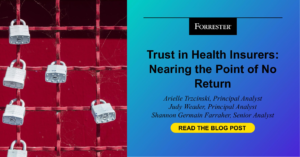The CIO mandate: navigating an era of remarkable change
Steering the ship as a CIO, the question often arises: “What exactly does a CIO do?” The truth is there’s no one-size-fits-all answer. Today’s CIOs must be as dynamic and adaptable as the technologies they champion, navigating through an era of remarkable change within the digital landscape. My experience at Nutanix thus far has been a deep dive into this transformative journey. CIOs lead digital transformation with strategic foresight, technical expertise, and a focus on cybersecurity and customer strategies. The role now requires agility to embrace and lead with emerging technologies, ensuring IT strategies are in lockstep with broader business goals. The evolving role of the CIO is pivotal in shaping their organization’s future in the digital era. In essence, the role of a CIO has evolved to become a nexus of innovation, leveraging technologies like AI and hybrid multicloud operations to enhance efficiency and agility and deliver customer-focused solutions. A key insight from my initial 30 days at Nutanix, informed by discussions with over 30 stakeholders, highlighted the necessity of refining our strategies. We needed to ensure our IT initiatives met technical specifications and were in perfect harmony with our strategic company vision. Nutanix’s growth mindset and openness to change have influenced my leadership. This supportive environment values the diversity of thought and promotes adaptability, resilience, and continuous development. Here leveraging unique strengths to their fullest is appreciated and expected, shaping a dynamic and forward-thinking approach to leadership and innovation. By the 60-day mark at Nutanix, we focused on solidifying our IT vision and strategy. Risk assessments revealed vulnerabilities and inefficiencies, guiding our strategy to optimize, consolidate, enhance security, and align with business goals. Building on these foundational efforts our journey did not pause at the 60-day mark. We completed the 90-day plan, marked by transformative changes, including the adoption of management by objectives (MBOs). This strategic pivot has revolutionized the efficiency and focus of our IT team, aligning every member’s effort with our broader organizational goals. Implementing MBOs has enhanced productivity and effectiveness, leading to remarkable achievements and strategic advancements. This period highlighted the importance of active collaboration with our team, customers, and vendors to align our technology roadmap with the latest industry trends. Discussions led to a comprehensive review, optimization, and consolidation of our lab infrastructure, adopting models like lab-as-a-service and refining our offerings. These initiatives reinforced our customer-centric IT approach, informed budget allocation, and strengthened our responsive, efficient IT strategy. One area that has been instrumental in helping us define our future is our “Nutanix-on-Nutanix” initiative. It’s a collaborative effort across all functional teams at Nutanix that leverages our technology to optimize our internal operations and showcase the effectiveness of our solutions. This initiative has resulted in significantly optimized infrastructure, resulting in 68% greater datacenter density, translating into lower capital and operational expenses. Further, we were able to achieve increased energy savings and a simplified hybrid multicloud environment These improvements speak directly to our commitment to performance, scalability, and reliability. The insights gained from implementing Nutanix-on-Nutanix will shape our strategic direction in the next fiscal year. It informs our product development and customer engagement strategies based on the success and learnings from applying our internal best practices. My involvement in Nutanix committees helped instill a culture of security, privacy, and responsible practices. By collaborating with teams across departments, we established policies that promote adherence to industry best practices and legal standards, enhancing compliance, accountability, and our ethical, secure framework. So, what do I take from all of this? We live and breathe in an industry heavily influenced and dominated by AI and cloud computing. Our roadmap at Nutanix is clear: To stay ahead, we must harness these innovations. We’re integrating AI to streamline operations and enhance customer support, as seen with our X-Bot initiative and cross-functional collaboration within our engineering team. Our cloud computing strategy focuses on delivering flexible and scalable solutions and sets a benchmark for our customers that enables us to demonstrate the tangible benefits of our technologies. Addressing cybersecurity is paramount. I aim to fortify defenses, ensure compliance, and safeguard our data. At the heart of our efforts is a commitment to our customers. By aligning our technology solutions with their needs, we aim to boost productivity and satisfaction. This customer-first approach, combined with our strategic adoption of AI and cloud technologies, positions Nutanix as a leader in driving business growth and innovation in the digital era. Learn more about Nutanix. source
The CIO mandate: navigating an era of remarkable change Read More »











